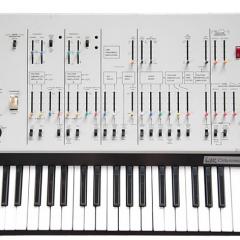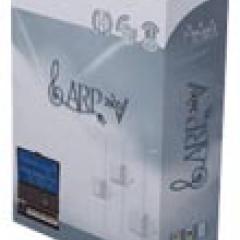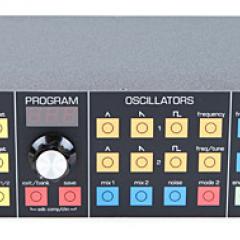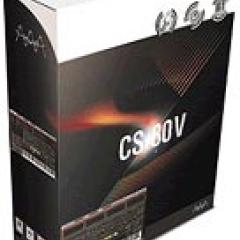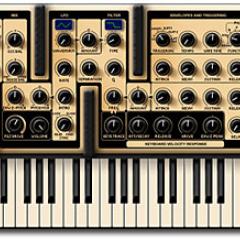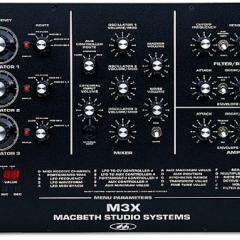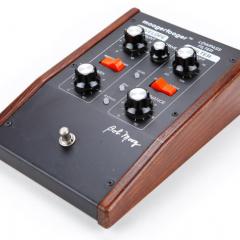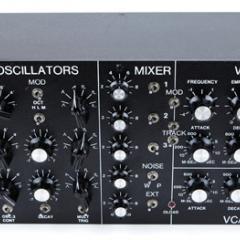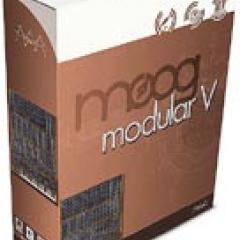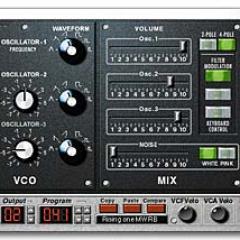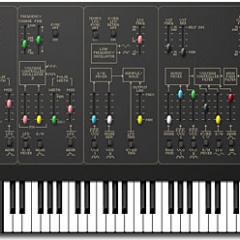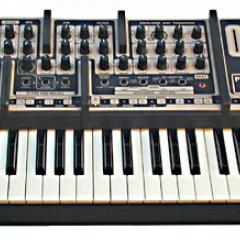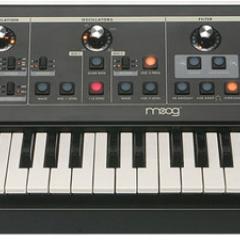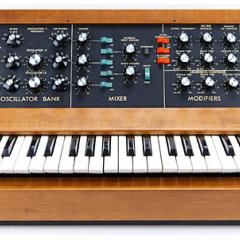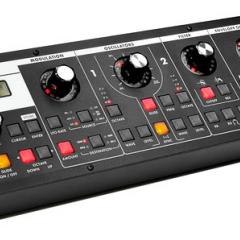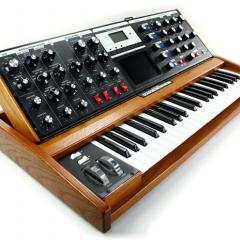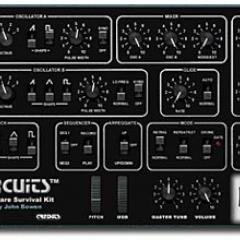Arturia Minimoog V
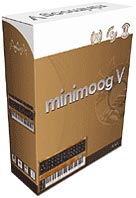
The Minimoog V is everything the original could have been and more, at a fraction of the price! The Minimoog V looks like the original Minimoog, and yes, it sounds like it too - minus the noise, instability and other problems associated with analog circuitry. Some may say that is the very character desired in analog synthesizers, but you just can't knock a totally pristine and clean Moog sound that's equally as fat as the original all the way up to 96kHz and 24-bit digital quality in STEREO! The Minimoog V is a software instrument for Mac and PC compatible with all standard formats (VST, DXi, Audio Units, MAS, RTAS, HTDM, and more).
Upon first impression, the Minimoog V is big! It takes up a lot of screen space, but since it is an almost exact replica of the Minimoog, you'll appreciate the size once you start twisting knobs and editing sounds. The original Minimoog was a monophonic synth with three oscillators. This version also has three oscillators but is polyphonic! You can choose from 1 through 8 and 16 or 32 voices of polyphony for each sound patch. That alone takes the famous Minimoog sound into territories the original never could go! And speaking of sound patches, the original had no memory, but there's virtually unlimited patch memory here, and the Minimoog V ships with over 400 programmed patches, many by famous artists! Patches include: Basses, Arpeggios, EFX, Keyboards, Leads, Pads, Percussion, Horns, Synths, and Template patches. The Templates are a great starting point for creating your own Leads, Pads, Basses, etc.
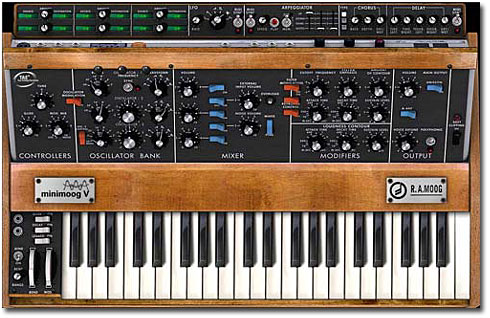
The front panel controls replicate the look and layout (and underlying synth architecture) of the original. There are three oscillators, each with selectable Triangular, Sawtooth, Square, Saw/Triangular, Wide Rectangular and Narrow Rectangular waveforms. Oscillator 1 has an Osc Sync switch, while Oscillators 2 and 3 have fine tune knobs. The Mixer section has On/Off switches and Level knobs for each of the three oscillators as well as the Noise Generator (white or pink) and External Stereo Audio Input.
Next stop for after the Mixer section is the famous Moog 24dB/oct lowpass filter, replicated here by Arturia to perfection! The same 6 knobs as the original: Cutoff, Emphasis (resonance), Amount, Attack time, Decay time, and Sustain time. The VCA section has the same Attack, Decay, Sustain control knobs as the original too. And like the original, that's about it for front-panel controls and functions, aside from a few other tuning and volume controls, including the built-in A-440 tone generator for 'tuning up' the Mini.
But the Minimoog V goes well beyond the capabilities of the original with more than just stereo and polyphonic capabilities and program memory. One of the cool features of the original Mini was that the front panel could be lifted up to be more perpendicular to the keyboard for easier use while playing and editing. Clicking on the Minimoog V's panel will cause it to lift up a bit too, revealing a whole new world of features the Minimoog never had, but should have: an LFO, Arpeggiator, Chorus and Delay effects, and a Modulation Matrix!
The LFO offers sine, saw up, saw down, square, noise, random, sample-and-hold modes with rate control and MIDI sync switch. The Arpeggiator has Up, Down, Random, Backwards, and Notes Played patterns adjustable over 1 to 5 octaves and 1 to 5 repeats as well as Chord Memory, adjustable Speed and MIDI sync. The Chorus offers three types with Rate, Depth and Wet/Dry controls. The Delay has independent left/right controls for both Decay Time and Feedback Amounts with MIDI sync for surprisingly animated delay effects within the stereo field. The Modulation Matrix is simple and powerful: it lets you assign 6 sources to 6 destinations, ie: assign the LFO to the VCF cutoff, or assign the Pitch Wheel to control the pitch of just Oscillator 1.
Finally, although most users will play the Minimoog V using a MIDI keyboard/controller, the virtual built-in keyboard replicates the original's 44-note keyboard with Pitch Wheel, Mod wheel, Glide, Legato, and Pitch Bend range controls. It adds stereo Send outputs too.
At just $249, the cost of the Minimoog V is much cheaper than an original almost 30 year old Minimoog as well as the newer Minimoog Voyager. On top of that, the features offered in the Minimoog V don't just replicate the original, but go way beyond it! It's hard to imagine how we used the old Minimoog when you see, and hear what Arturia has done with it!
Demos & Media

Specifications
1 external audio input, 1 external oscillator and filter modulation input
1 Mixer section with Level and On/Off controls for all 5 sound sources.
No aliasing from 0.1 Hz to 20 kHz, 64-bit floating point precision, Sampling rate: up to 96 kHz
1 modulation matrix offering up to 6 different connections (12 source options, 32 destinations)
1 three-mode chorus with rate, depth and wet/dry controls.
Resources
Images from Arturia.
